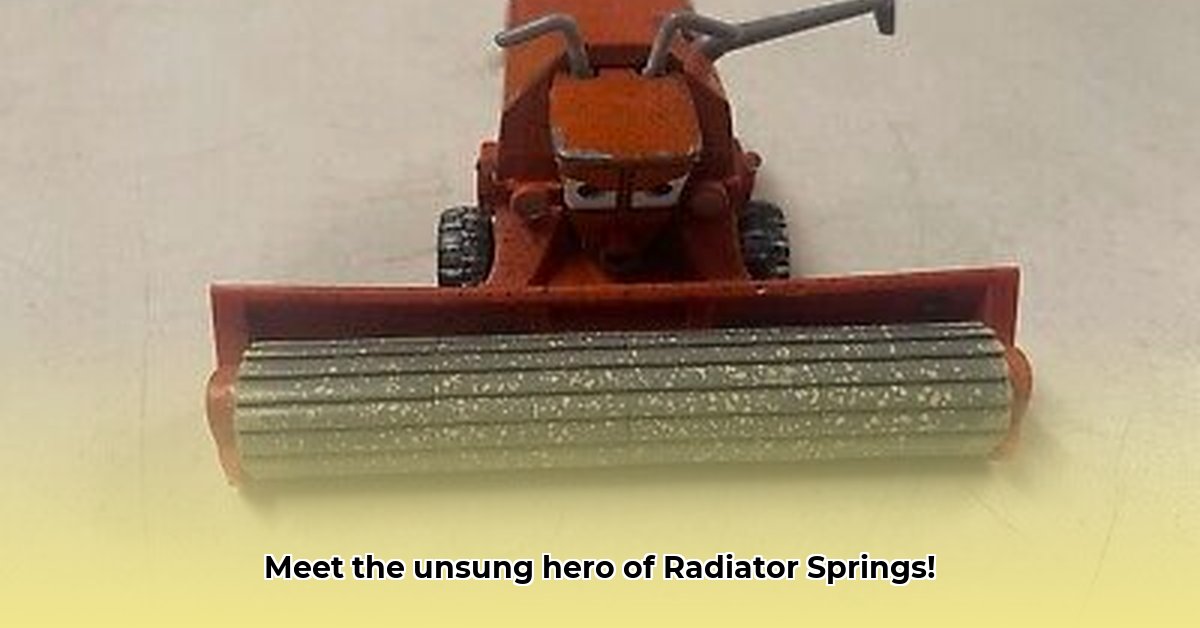
Frank the combine harvester, a recurring character in the Cars franchise, presents a fascinating case study in inconsistent characterization. While consistently portrayed as a powerful, grumpy antagonist, his specific role and threat level fluctuate wildly across the films and video games, creating a complex and often contradictory character arc. This analysis will delve into these inconsistencies, exploring Frank's visual design, gameplay mechanics, and narrative presence to understand the multifaceted nature of this enigmatic farmhand. For more on similar agricultural vehicles, check out this cool site.
Frank's Grumpy Charm: A Consistent Core
One aspect remains constant: Frank's personality. He is invariably depicted as a robust, easily angered giant, fiercely protective of his territory. His design—a large, maroon combine harvester with subtly bull-like features—perfectly complements this grumpy demeanor. He communicates primarily through growls and roars, conveying a powerful presence that resonates across media. This consistent aggression forms the foundation of his character, establishing him as an immovable force in the Cars world. His intimidating silhouette alone speaks volumes, a testament to effective visual storytelling.
The Fickle Farmer's Machine: Inconsistency in Action
However, Frank's role significantly varies depending on the context. Sometimes, he's a menacing pursuer, hot on Lightning McQueen's heels, a genuine antagonist. Other times, he's a more comedic obstacle, easily outmaneuvered. This creates narrative dissonance. Is he a credible threat, a powerful opponent, or merely a clumsy oaf? The answer unfortunately depends entirely on whether we’re discussing his portrayal in the films or in the video games.
Frank's Changing Looks: A Visual Puzzle
Even Frank's appearance isn't static. Variations exist in early concept art, showcasing differences in color and design compared to his final iterations. These discrepancies highlight the character's evolution, potentially reflecting adjustments in animation style, artistic direction, or merely creative choices. This raises the question: which version of Frank is the "authentic" Frank? The one from the first film? Or a later iteration? It's a debate ripe for passionate fan discussion.
Gameplay Gaffes: From Tough Opponent to Easy Target
The inconsistencies are particularly striking in the video games. In the original Cars game, Frank presents a significant challenge, a formidable adversary. However, in Cars: Mater-National Championship, he becomes surprisingly easy to defeat. This shift is jarring. He transitions from a powerful, intimidating antagonist to a near-pushover. Was this a deliberate design choice to enhance game accessibility? Or an unintentional downplaying of his established strength due to gameplay mechanics?
Unraveling the Mystery: Frank's Untold Story
Frank’s enigmatic nature stems from his lack of backstory and limited screen time. While viewers witness his actions—grumbling, aggressive behavior—they remain largely unaware of his motivations. Why is he so fiercely protective? What's his history? These unanswered questions represent untapped storytelling potential. A deeper exploration of Frank's past and inner life would significantly enrich both his character and the Cars universe, offering valuable insight into his behaviors. Wouldn't a richer backstory make him even more compelling?
Frank Across the Media: A Quick Comparison
The following table summarizes Frank's portrayal across various Cars media:
| Media | Role | Threat Level | Design Consistency | Gameplay Significance |
|---|---|---|---|---|
| Cars (Film) | Menacing Pursuer | High | High | Significant |
| Cars Video Games | Obstacle, Antagonist | Variable | Medium | Variable |
| Concept Art | Varies | N/A | Low | N/A |
Frank's Future: A Call for Consistency
The potential for Frank is immense. A more consistent and nuanced portrayal would significantly benefit the Cars franchise. Pixar and Disney could explore his backstory, adding depth and making him more compelling. Game developers could refine mechanics to better reflect his established personality, ensuring a consistently challenging and engaging experience. Fan input is also invaluable here. A more fleshed-out, consistently portrayed Frank would enrich the entire Cars experience. What improvements would you suggest for Frank’s future appearances? The possibilities are as vast as Frank himself.
How Frank's Character Arc Differs Across Cars Games and Movies
Frank's portrayal exhibits subtle shifts across the franchise's various mediums. His consistent visual identity—a maroon combine harvester with "horn-like" smokestacks and a ring in his nose—reinforces brand recognition. He's consistently cast as an antagonist, a formidable obstacle for Mater and McQueen. However, the games present a playful, less threatening version compared to the films’ subtly menacing portrayal. This difference likely stems from the limitations of game mechanics versus the narrative opportunities of film. The consistent lack of backstory across all platforms further hinders a deeper understanding of Frank's motivations, leaving a large, unexplored area open for storytelling. His design expertly blends realism and cartoonish exaggeration, contributing to his memorable character arc. This seemingly inconsistent portrayal, in fact, points to a successful franchise strategy. His consistent antagonistic role sustains audience engagement across varied platforms.
Key Takeaways:
- Frank's visual consistency ensures strong brand recognition.
- His antagonistic role is consistently maintained.
- Games present a less threatening Frank than the films.
- A lack of backstory remains consistently across all media.
- His design blends realism and cartoonish elements effectively.